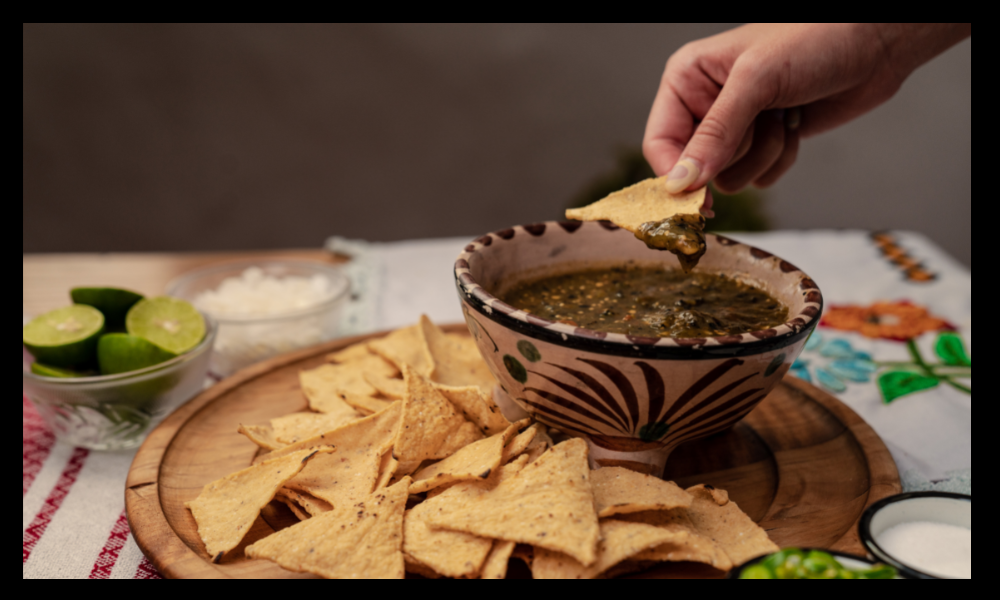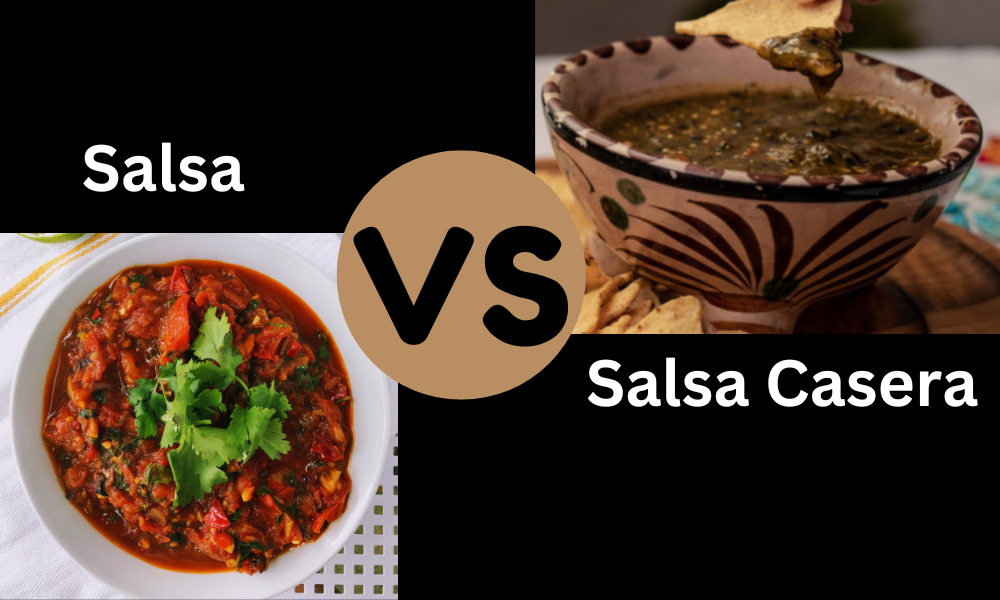If you love Mexican and Central American cuisine, then you’re no stranger to salsa and salsa casera. These two types of sauces add flavor and spice to various dishes, from tacos and burritos to nachos and quesadillas. But what is the difference between salsa and salsa casera, and what should you know about them? Let’s dig it out.
What is salsa
Salsa is made from a blend of chopped vegetables, such as tomatoes, onions, peppers, and seasonings like garlic and cilantro. It is typically used as a condiment or topping for dishes like tacos, burritos, and nachos. It can be found in various flavors and heat levels, ranging from mild and fruity to spicy and hot.
Salsa is known for its refreshing, tangy flavor and can add a burst of flavor and spice to various dishes. It is also famous for dipping chips or vegetables and can be used as a marinade for grilled meats or vegetables. Salsa is often made with fresh ingredients and can be found in both store-bought and homemade varieties.

What is Salsa Casera
Salsa casera, also known as “homemade salsa,” is usually made at home using fresh ingredients and simple seasonings. It is typically made in small batches and is often considered to be more authentic and traditional than store-bought salsa.
Salsa casera can be customized as per your taste by adjusting the ratio of vegetables and seasonings and adding more or less heat as desired. It is a great way to add fresh, homemade flavor to a variety of dishes and is a popular choice for those who prefer more authentic, traditional flavors.

Types of salsa
There are many different types of salsa, each with its own unique flavor and heat level. Some common types of salsa include:
Pico de gallo: A fresh, chunky salsa made with chopped tomatoes, onions, peppers, cilantro, and lime juice.
Salsa verde: Salsa verde means “Green sauce.” This green salsa is made with roasted green tomatoes, onions, and peppers and seasoned with cilantro and lime juice. You can add low-salt chicken broth to your salsa verde for more flavor.
Tomatillo Salsa Verde: Tomatillo Salsa Verde is made with tomatillos, chopped white onion, garlic, chopped cilantro leaves, fresh lime juice, serrano peppers, Salt to taste, and stems
Salsa roja: Salsa roja is also called Red enchilada sauce. This red salsa is made with ripe tomatoes, onions, peppers, and spices like cumin and chili powder.
Salsa negra: A dark, smoky salsa made with charred or roasted tomatoes, onions, and peppers.
Salsa cruda: A raw salsa made with fresh, uncooked ingredients like tomatoes, onions, peppers, and cilantro.
Mango salsa: A fruity salsa made with diced mango, tomatoes, onions, peppers, and cilantro.
Corn salsa: A salsa made with fresh or canned corn, tomatoes, onions, peppers, and cilantro.
Black bean salsa: A salsa made with black beans, tomatoes, onions, peppers, and cilantro.
Pineapple salsa: A sweet and spicy salsa is made with diced pineapple, tomatoes, onions, peppers, and cilantro.
Chipotle salsa: A spicy salsa made with chipotle peppers in adobo sauce, tomatoes, onions, and peppers.
Salsa Taquera: Salsa Taquera is made with roasted tomato, onion, and garlic and blended.
Salsa Ranchera: Salsa Ranchera is made with tomato puree, ancho peppers, jalapeno peppers, cascabel peppers, vinegar, iodized salt, onions, garlic, soybean oil, spices and bay leaves
The differences between salsa and salsa casera
Salsa # Salsa Casera
Definition
A sauce made from a blend of chopped vegetables and seasonings
# A specific type of homemade salsa made with fresh ingredients and simple seasonings
Ingredients
Tomatoes, onions, chili peppers, garlic, cilantro, and other seasonings
# Tomatoes, onions, serrano peppers, garlic, cilantro, and other fresh ingredients and seasonings
Preparation
Can be purchased at the store or made at home
# Made at home in small batches
Flavor
Can vary in flavor and heat level
# Known for its fresh, homemade flavor
Authenticity
Can be store-bought or homemade
# Considered more authentic and traditional due to being made at home
Uses
Used as a condiment or topping for dishes like tacos, burritos, and nachos and as a dipping salsa for tortilla chips
# Commonly used as a condiment for Mexican food dishes like tacos, quesadillas, and enchiladas, and can also be used as a dipping sauce or marinade
Final words
By reading this blog, you can understand the definitions, ingredients, and preparation methods of both types of sauces can help you make informed decisions about which one to use in your cooking. You may also learn about the various flavors and heat levels available in both salsa and salsa casera, allowing you to choose the one that best suits your taste preferences.
Overall, understanding the differences between salsa and salsa casera can help you make informed decisions about which type of sauce to use in your cooking and may even inspire you to try making your own homemade salsa casera.







